To find out, Click here or click on the image below for your free market report.
This new online tool provides a comprehensive report on exactly what is selling in your
neighborhood, free! There is no cost or obligation.

To find out, Click here or click on the image below for your free market report.
This new online tool provides a comprehensive report on exactly what is selling in your
neighborhood, free! There is no cost or obligation.
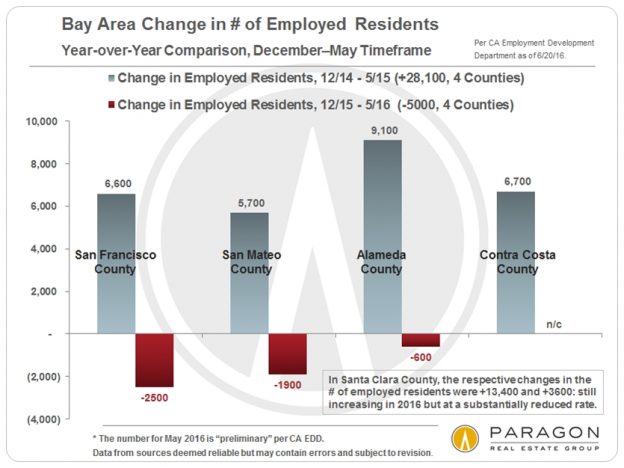
Significant changes in Bay Area employment trends – Paragon
Our analyst at Paragon, Patrick Carlyle, provides these insights:
Analyzing new data (preliminary May numbers) from the CA Employment Development Department indicates a significant shift in Bay Area employment numbers. As seen in the chart below, looking at the 4 central Bay Area Counties, comparing the first 5 months of last year to the same period of this year, the change in the number of employed residents during each period went from an increase of 28,100 last year to a decline of 5000 in this past December to May.
(Santa Clara County continued to grow in number of employed residents, but at a substantially reduced rate from the previous year.)
This is the first time since 2009 that the number of employed residents in this area has declined instead of increasing, though this is still relatively short-term data and doesn’t prove a lasting, long-term trend.
Changes in employment figures, up or down, typically affect the rental market relatively quickly and dramatically – more so than the real estate purchase market – and that certainly appears to be the case in San Francisco, where softening demand and rents have been widely reported. The big increases in employment, and thus of population, of past years put immense pressure on rental rates over the past 5 years around the Bay Area (see last chart below). The decreases in employment we’re seeing this year are coupled with recent, increased rental inventory construction, albeit most of which has been at the very high end of rent rates.
Average asking rents have actually plateaued over the last 3 quarters (not illustrated below), which may disguise a decline in actual rent rates which have not yet showed up in the statistics.
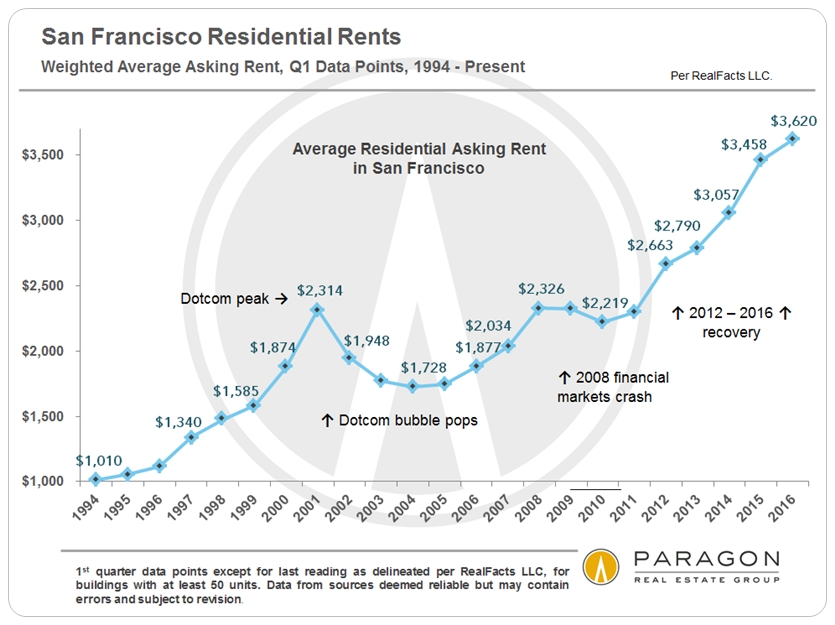
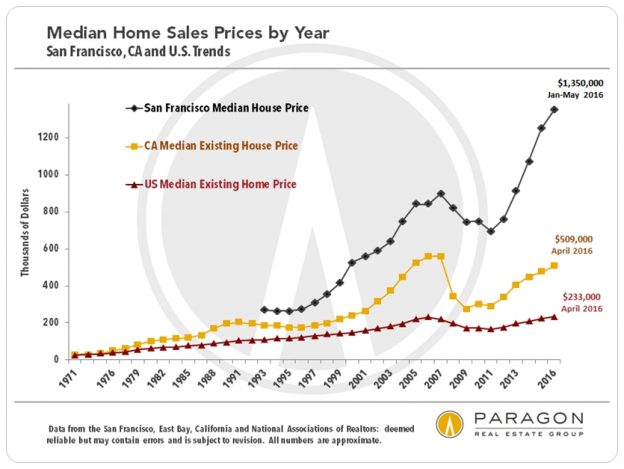
|
||||||||||||||
|
||||||||||||||
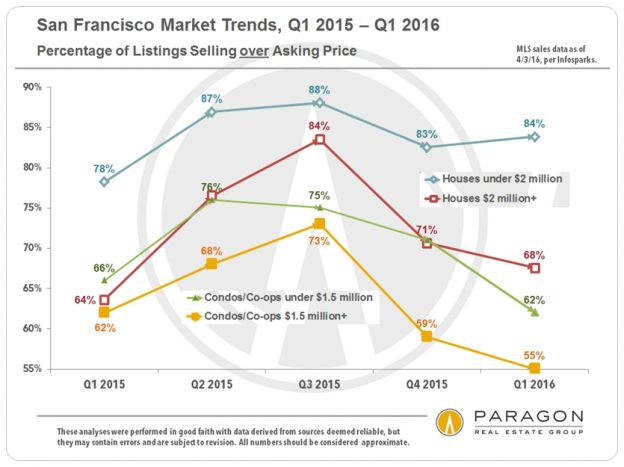
The San Francisco Luxury Home Market
Homes of $2 Million & Above
Auto-Updating Market Analytics
The bar charts compare year-over-year data, going back 2 years, for the latest month. The line charts track monthly data over a period of 3 to 5 years. Note that it can take 7 to 15 days after a month’s end for agents to enter in transaction data pertinent to the month in question, so statistics for the latest month can sometimes change significantly as this data is added to calculations.

Auto-Updating Market Analytics
Seasonality plays a significant role in luxury real estate statistics as the market ebbs and flows during active and less active sales seasons. Typically, the market is most active in the spring and fall, and much slower in the summer and, especially, the mid-winter holidays.
New Listings Coming on Market, by Month
September is usually the single biggest month for new high-end home listings.
Spring is typically the most active season for new listings.
New listing activity plunges during the mid-summer and mid-winter holidays.
Total Number of Active Listings for Sale during Month
Number of Listings Accepting Offers, by Month
Number of Sales, by Month
Percentage of Listings Selling for over Asking Price, by Month
Median Percentage of List Price Achieved on Sale
Over 100% usually signifies competitive overbidding;
under 100% signifies more aggressive buyer negotiation.
Median Dollar per Square Foot (upon Sale)
3-Month Rolling Average
Months Supply of Inventory (MSI), by Month
The lower the MSI, the greater the buyer demand as compared
to the inventory of listings available to buy.
Median Days on Market before Acceptance of Offer
3-Month Rolling Average
Expensive Home Sales by San Francisco District & Neighborhood
Note that these charts using differing price points for the “luxury home” designation.



Other reports you might find interesting:
Market Analytics for General SF Market
30+ Years of San Francisco Real Estate Cycles
San Francisco Neighborhood Affordability
10 Big Factors behind the San Francisco Real Estate Market
Bay Area Apartment Building Market
Link to San Francisco Neighborhood Map
It is the relationship between supply and demand that defines the state of the market. Looking at one statistic such as the number of sales, without comparing it to how many listings were available to purchase, may give a distorted view of market conditions. Some statistics, such as months supply of inventory take both supply and demand into account. Last but not least, short-term statistics sometimes fluctuate without great meaningfulness - longer-term trends are always most meaningful.
Sales data usually reflects market activity, i.e. when a new listing comes on market and offers are negotiated, occurring 4 to 8 weeks before the sale date. Thus, for example, sales in June mostly reflect new listings and offers negotiated in late April and May.

San Francisco Real Estate Market Report March 2016, including 13 custom charts.
|
|||||||||||||||
|
|||||||||||||||
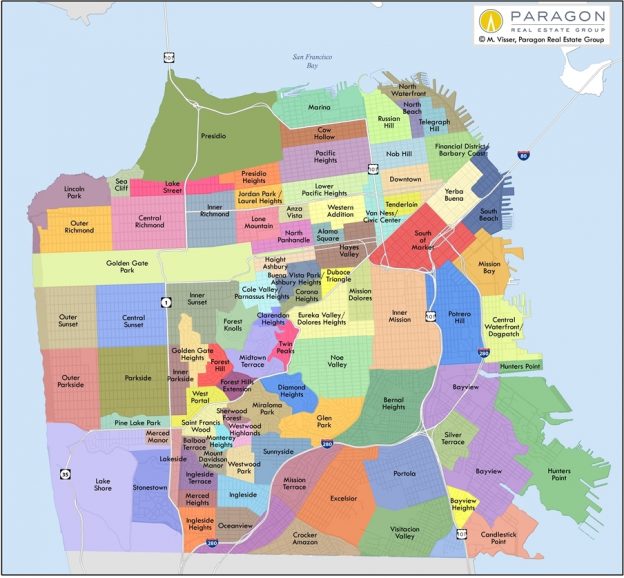
San Francisco Home Price Appreciation
|
||||||||||||||
|
||||||||||||||
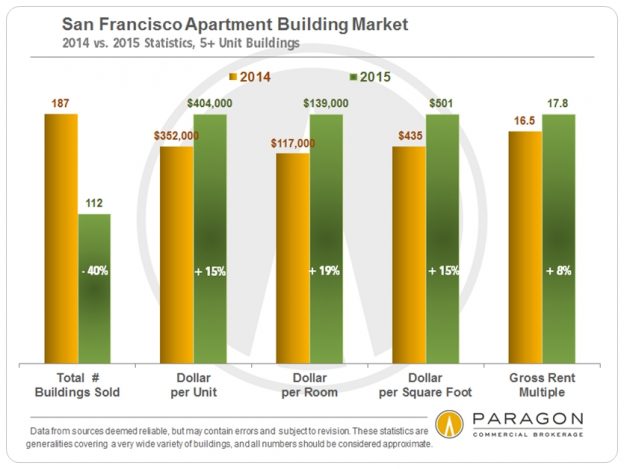
January 2016, Paragon Commercial Brokerage
Some charts below apply specifically to smaller, 2-4 unit buildings, others to larger, 5+ unit properties, and some to both. Each segment has distinct market dynamics. The first 2 charts illustrate the year over year decline in sales volume, but the continuing increase in values.


As seen above, 2015 saw a small drop in the sales of smaller, 2-4 unit apartment buildings in San Francisco, similar to that seen in the homes market. (It is not unusual for these buildings to have an owner occupier and/or be sold to buyers planning to occupy). There was a much bigger decline in the sales of larger, 5+ unit, investment properties: The latter drop reflected more a decline in portfolio sales (one owner, sometimes a financial institution, selling multiple properties) and an increased reluctance of owners to sell, than, so far, any substantial decline in buyer demand. Indeed, multiple offers on attractive listings remained common, the average sales price for 5+ unit buildings was almost 4% above asking price (7% for 2-4 unit buildings), and values continued to rise in 2015.
With low interest rates and soaring rents, many SF apartment buildings have become cash-generating machines, and prospective sellers would be challenged to find comparable returns in other investments. This reduces the motivation to sell and cash out. Furthermore, owners who might typically sell in order to buy larger buildings for better economies of scale via a 1031 exchange are daunted themselves by the difficulty of finding suitable upleg properties within the tight time constraints of tax law.
The first 4 to 6 weeks of the year are a slow period in real estate and the next tangible indication of market direction will come after the market begins to wake up in late-winter/ early spring.
--------------------------------------------------------------------


Prices, Values & Appreciation Trends



By San Francisco Neighborhood and District




--------------------------------------------------------------------
Supply & Demand

--------------------------------------------------------------------
Residential Rent Trends & Comparisons
In the first chart below, note that San Francisco rents fell far more after the dotcom bubble popped in 2001, and the resulting loss of thousands of high-tech jobs (see employment graph further below), than after the much larger, financial-markets crash of 2008. There is much vehement disagreement right now as to whether there are or are not meaningful parallels between the current high-tech boom and the earlier dotcom boom.



--------------------------------------------------------------------
San Francisco Employment

--------------------------------------------------------------------
Interest Rate Trends

Q4 2015 Sales of 5+ Unit Apartment Buildings

Please contact me if you would like further details on any of the sales listed,
or on properties currently available to purchase.
--------------------------------------------------------------------
Apartment Building Sales by Broker

All information is from sources deemed reliable, but may contain errors, is not warranted and subject to revision. Statistics are generalities that typically disguise an immense variety of specifics in the individual, underlying sales. Numbers should be considered estimates and approximations, and how these statistics apply to any particular property is unknown without a specific comparative market analysis.
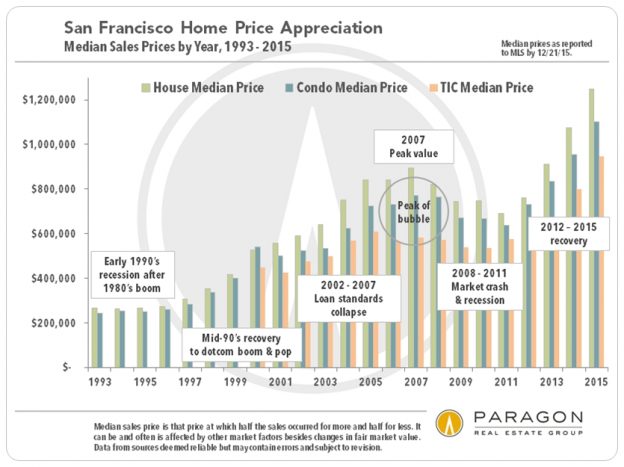
Happy New Year!
Our amazing analyst at Paragon has put together over 20 charts in order to provide an understanding of the SF Market from multiple perspectives. Unless you are really into charts, it’s a lot of information. Some of the conclusions to be drawn include:
Although I don’t have a chart to illustrate it, I have had several clients thank me in the past few months for helping them buy their property 10, 15, and sometimes 20 years ago. They tell me it was the best investment they ever made–either because they can stay in their home into retirement (and in San Francisco), or because they can sell and use the equity built up over the years for their next chapter. I thank them profusely for sharing their feelings with me. It is stories like these that give my job meaning and make me feel like I am helping people, which is hugely important to me. Thank you!
|
||||||||||||||
|
||||||||||||||
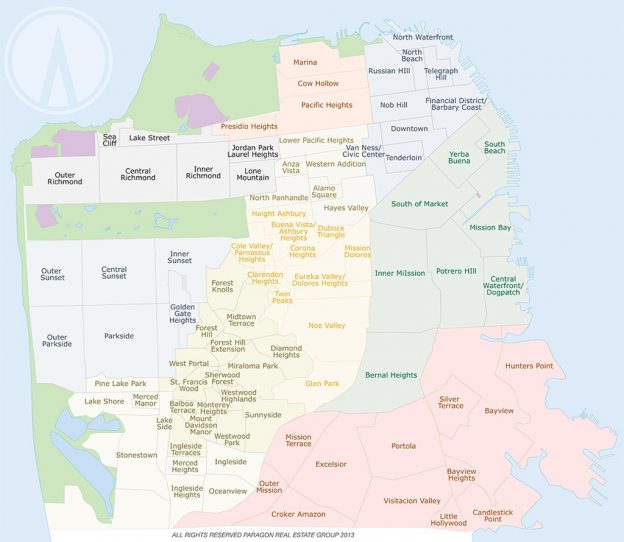
Median Home Prices, Reflecting MLS Sales Reported 4/1/15 – 12/7/15
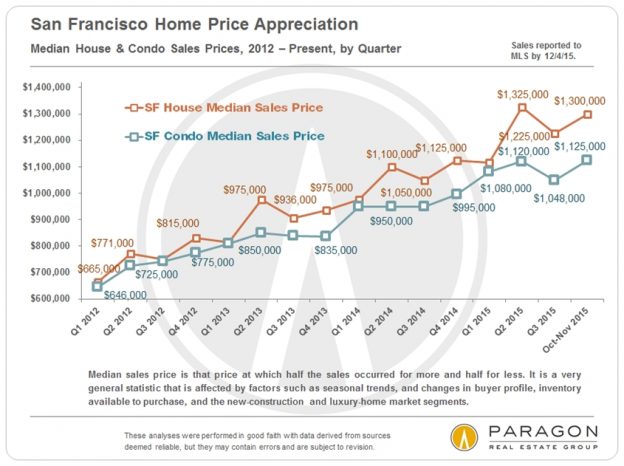
|
||||||||||||||
|
||||||||||||||
Pota Perimenis is committed to providing an accessible website. If you have difficulty accessing content, have difficulty viewing a file on the website, or notice any accessibility problems, please contact us at (415) 407-2595 to specify the nature of the accessibility issue and any assistive technology you use. We strive to provide the content you need in the format you require.